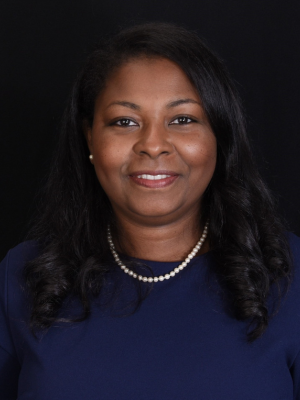 “One thing that’s at the core of how I operate is a focus on internal versus external gratification. I tend to go above and beyond for my own satisfaction because I have very high standards for myself,” says Mikaylee O’Connor. “Everyone’s way towards internal gratification is different, but I feel that when you do things for yourself, you exude different energy and attract more of what you want.”
“One thing that’s at the core of how I operate is a focus on internal versus external gratification. I tend to go above and beyond for my own satisfaction because I have very high standards for myself,” says Mikaylee O’Connor. “Everyone’s way towards internal gratification is different, but I feel that when you do things for yourself, you exude different energy and attract more of what you want.”
Moving From Her Comfort Zone
Growing up in a small Oregon town, O’Connor was put on the Montessori track with an emphasis on independent thinking and hands-on learning. She then skipped middle school, while being home-schooled and spending her time in the stables, riding horses. She graduated high school at 17 and was off to Portland State University.
As a finance graduate, O’Connor joined a local investment consulting firm, RVK, as an investment analyst. She stayed for almost 13 years, working her way up while advising clients on pensions, 401k plans, and endowment foundations, to eventually becoming Head of Defined Contributions (DC). In 2020, she craved a new challenge.
“When you feel like you’re in your comfort zone, it’s the right time to maybe see about getting outside of that comfort zone. I wanted to do more strategic thinking, be a little more creative and be part of a movement to help the DC industry forward and find better solutions for everyday people,” she says.
In the start of 2021, she joined PGIM as a senior DC strategist and, this past February, she became a principal. O’Connor enjoys the ‘think tank’ atmosphere of her team: “We’re always asking, ‘What is the problem out in the market and how can PGIM and Prudential as a company come together to solve these problems and deliver solutions?’”
Embracing the New Challenge
“In my experience, the consulting world is very much for people who like to be constantly challenged,” she notes. “Every client project provides something new – new content, new research, new ways of presenting materials, or simply, adjusting to different personalities.”
O’Connor finds that everything depends upon how you approach those challenges: getting frustrated or seeing each as an invitation to grow. Receiving the support of mentors and advocates has been critical to rolling with new challenges. As she’s become senior, providing that same support to junior associates has been essential and rewarding.
She’s also learned to stay open to what she doesn’t yet know: “If you’re constantly trying to learn new things, you have to be humble to the fact that you don’t know everything,” she advises. “It’s important to surround yourself with different voices and perspectives so that when you’re trying to solve problems or provide solutions, you have that 360-degree view instead of looking only right in front of you.”
Opening to More Possibilities
O’Connor is known to give an unfiltered view of what she is thinking and play her own part in widening the conversation in any meeting.
“I push us to think differently or to have a different view on what we’re trying to solve. I often bring the end-user to the table,” she reflects. “Let’s put ourselves in the position of the person that’s going to be using this product or solution. How would they go about doing this or that?”
Despite being in a predominantly white male industry, O’Connor had the opportunity to work under a female CEO at RVK and with many female shareholders throughout her career. But when becoming involved in industry organizations, the gender skew became salient. Her approach to being underestimated by male peers was simple: “I would feel compassion for them because, at the end of the day, that’s their own challenge, not mine.”
But mostly, she has leveraged being a unique voice in the room to help her challenge the status quo.
“I’ve always been one to point out that just because we’ve done it this way in the past doesn’t mean we need to do it this way going forward. What are we missing? What should we be thinking about differently?” she says. “Having both that fresh perspective and high conviction about thinking about problems and solutions differently doesn’t always make people feel good. But I like a good debate and being uncomfortable talking about things, because we are only going to grow more through it.”
Adapting For Your Audience and Your Team Members
“Whether it’s your boss, client or a prospect, reading the room and adjusting how you approach the situation and your communication style matters to being effective,” says O’Connor.
Being able to adapt to and apply different ways of learning and communicating has been a powerful component in her ability to meet people where they are and create the momentum that drives results. Equally, sitting on the extrovert-introvert cusp, O’Connor highly values adapting her approach to hearing all voices in the room, including considering the different ways they may need to be heard.
“You have extroverts and introverts. You have people who need more time to think and you have people who can come up with ideas right on the spot in the meeting,” she says. “In order to capture all of the different great ideas, concerns and considerations, you have to consider how to make sure that you’re getting what you need from each of them, and that you make them all feel included.”
Reframing for Confidence
Shifting her mindset to increase her confidence has helped O’Connor to take on bigger roles.
“In the past, despite being overly prepared for a client meeting or discussion, I would still feel nervous,” she recalls. “But one mentor in particular assured me, again and again, that I knew more about the topic than anyone in that room. Over time, it shifted my perspective from being the ‘victim of scary stares and expectations’ to a ‘person with important information to share.’ I shifted to see that I’m going in there as a teacher.”
Now she loves to speak in front of an audience and does so often. Another learning curve has been around the challenge of leadership.
“I can be a perfectionist and always want to do things correctly, but when you’re in charge of people and emotions, that’s a different skillset and a different realm of understanding how to deal with things,” she says. “It takes a lot of listening and stepping back to ask how you can best support each of these individuals. Ultimately, their success is also my success.”
She’s also learned to always ask for feedback and to create an environment where people feel comfortable giving it.
Meanwhile, O’Connor has recently been unlearning multi-tasking as a leader: “I’ve been working on mindfulness and there’s a huge benefit to focusing your attention on one thing at a time. I’m much more active and creative when I get rid of distractions.”
Focusing on Internal Gratification
“By focusing on internal gratification, I’ve naturally been given more opportunities without necessarily focusing on what I have to do to get to the next step or to get promoted, because those are external focuses,” she notes. “By doing what I want to do – to grow and to learn and to do it for myself – I’ve just had those opportunities come to me.”
For years, O’Connor has been doing a self-review after meetings to consider whether she could have done anything better or differently. While it can be exhausting, it helps her grow and creates internal gratification.
“I would encourage women to focus internally and not worry so much about external steps and getting to the next one,” she says, “because then you’re doing the work for someone else instead of yourself.”
Being Human, First
O’Connor appreciates how PGIM Quantitative Solutions CEO Linda Gibson shows strength in her role and humanness in her communications.
“Linda has brought a sense of ‘we’re all just people.’ We’re all trying to do the same thing and nobody needs to be on a pedestal,” she says. “She can talk to you in the office just like anybody. It’s refreshing.”
O’Connor observes that since the pandemic and remote offices, more people are breaking down barriers and hierarchy, while seeing everyone as individuals and not just as employees.
“If we want to bring out the best in ourselves, we also have to show that we’re all humans and we all have things going on,” she says. “We can normalize that. But also, how do we take that change and use it to create a more cohesive and better company? Our relationships can be stronger because I can relate to you on something I didn’t know before.”
Speaking of which, O’Connor finds travel to be good for the soul, and enjoys seeking out AirBnBs and boutique stays with her husband while getting out of their comfort zones and taking in the cultures wherever they are exploring, most recently the Swedish Lapland in the forests of the Arctic circle, with saunas and cold plunges. Iceland is another favorite. Closer to home, she likes scouting out new atmospheric spots for a great meal in New York.
By Aimee Hansen




